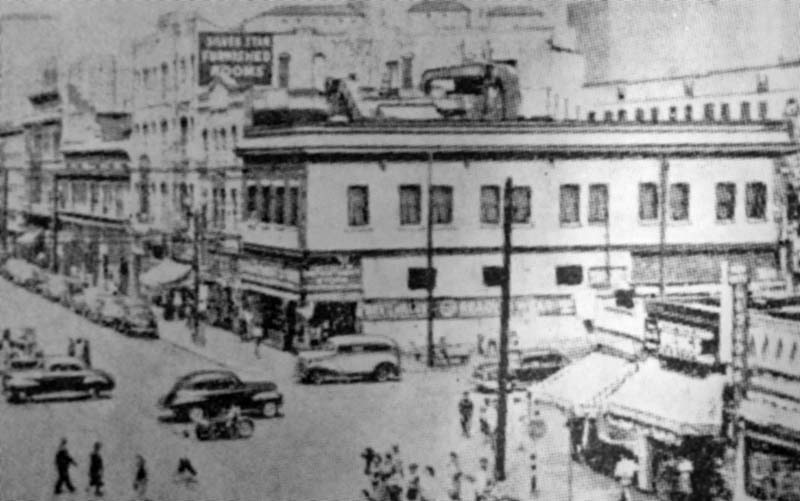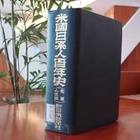Read Part 5: Japanese Americans in Southern California ~ Part 1 >>
Japanese who traveled to America organized themselves into many groups based on their place of origin, religion, occupation, etc. One such group was the Southern California Central Japanese Association, which was founded early on in Los Angeles and continued to be active in various fields until just before the war.
The second chapter of "A Centennial History of Japanese Americans in the United States," entitled "Southern California," includes the third section, "The Footprints of the Southern California Central Japanese Association," which summarizes the history of Japanese immigrants coming together to fight for mutual aid, improved rights, and a stable livelihood.
I would like to introduce some of the key developments that emerged from this.
The Southern California Central Japanese Association was founded on September 1, 1915. "The association sent representatives to the Association of Representatives of Japanese Associations in America from 1911 onwards, and dealt with various issues, including measures against the California Anti-Japanese Land Law, which had gradually intensified, mainly through the Rafu Japanese Association. On April 9, 1914, representatives of Japanese associations from all over Southern California met and, in light of the current situation, including the Anti-Japanese Land Law, decided to reorganize the 'United Japanese Association of Southern California', which had previously been merely a liaison group, into an independent organization..."
Raised $330,000 during the Great Kanto Earthquake
Looking at some of the records of their activities since then, they are quite diverse.
▼1916 = Relief for flood-stricken areas, arbitration of disputes between local organizations, guidance for women to stop working on Sundays
▼ 1917 = Promotion of anti-gambling campaign, improvement of sanitary conditions for residents
▼1918 = Movement to prevent the anti-Japanese fishing bill, protest against the ban on photo marriage
▼1919 = Welcoming the Japanese Training Fleet
▼1920 = Establishment of youth associations in each region of the Japan Association and encouragement of the establishment of agricultural associations in each region.
1924 - Southern California raises $330,000 for relief efforts following the Great Kanto Earthquake
1932 - In August, the 10th Olympic Games and the American Civic Association Convention were held, and the organization provided welcoming support for both.
1935 - Manchuria, Sino-Japanese War: The US's attitude towards Japan worsens due to the outbreak of the Second Sino-Japanese War.
After this, friction between Japan and the United States intensified, and the Japanese Association of Southern California began making donations to Japan while at the same time working to promote friendship between the two countries, a move that reflected the complicated feelings of Japanese Americans.
In 1940, the name of the Southern California Central Japanese Association was changed to the American Central Japanese Association, "befitting the area with the largest concentration of Japanese in the United States." From then until the outbreak of war, the association was very active in responding to the changing times.
The regular representatives' meeting held at Koyasan Hall on February 21 and 22 of the same year was "a time of unprecedented tension from beginning to end." A resolution was made here on how to deal with the current situation.
▼Resolution: We, the representatives of the Central Japanese Association of America, parents of Japanese American citizens, are grateful for the opportunities we have always had in our second home, the United States, to enjoy various benefits. In the event of an emergency, we will not hesitate in the slightest to fulfill all of our duties for the United States, just as we would any other citizen. (Omitted)
As a Japanese and an American
The second generation had already begun to be called up for military service, and before they volunteered or were drafted to serve in the military, send-off parties were held in great numbers, encouraged by the Central Japanese Association of America. The association's current affairs committee members offered words of encouragement to the soldiers.
The content was, "Become exemplary American soldiers, demonstrate the sincerity and excellence of the Yamato people, and thereby raise the value of the Japanese people in the world. Although you are racially Japanese, your nationality is American, and you are respectable American citizens. Without any worries, be loyal to America with all your heart and soul, and thereby contribute to the friendship between Japan and the United States."
The Committee also traveled to Washington DC to petition the US government for adequate protection for Japanese nationals living in the US when Japan-US relations reached their worst point, and met with President Roosevelt's wife and the Attorney General. As a result, they were promised fair protection.
He also invited editors of English-language newspapers in Los Angeles to restaurants such as Kawafukutei and Ichifujitei, and invited leaders of the Los Angeles County American Legion to promote goodwill. He also held current affairs lectures by local leaders for Japanese people.
In the summer of 1941, he also visited San Francisco to inform Ambassador Nomura Kichisaburo, who was to take up his post in Washington DC, about the conditions of Japanese people in California.
However, these efforts were undone by the Japanese military's surprise attack on Pearl Harbor on December 7, 1941. At 4 p.m. that day, the Central Japanese Association held an emergency situation committee meeting, which passed a resolution calling for the members to faithfully abide by U.S. law as good American citizens and then adjourned. From that evening onwards, the majority of the emergency situation committee members were arrested as potential enemy aliens.
Thus came to an end the activities of the Central Japanese Association of America.
(Note: Honorifics have been omitted. Quotations have been made as original as possible, with some modifications. Place names are based on the notation used in the "Centen-nen-shi.")
@ 2014 Ryusuke Kawai







